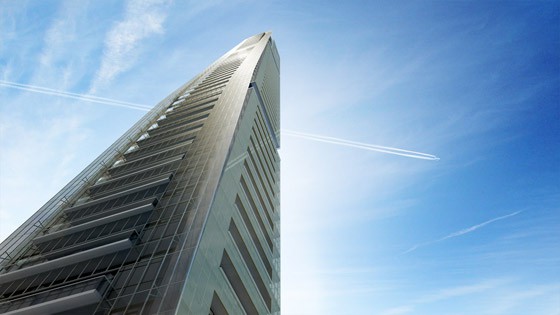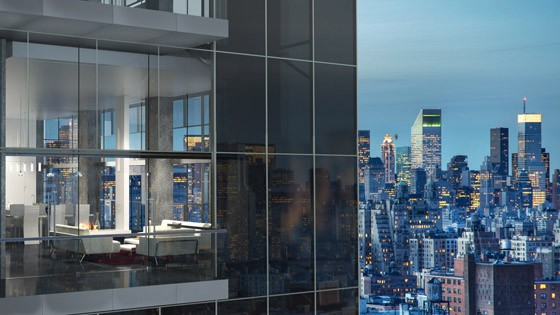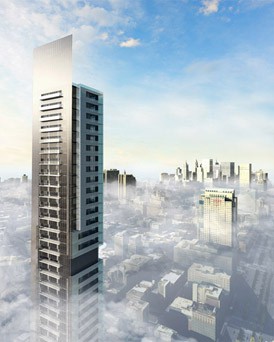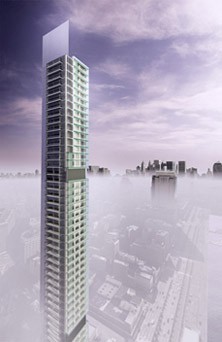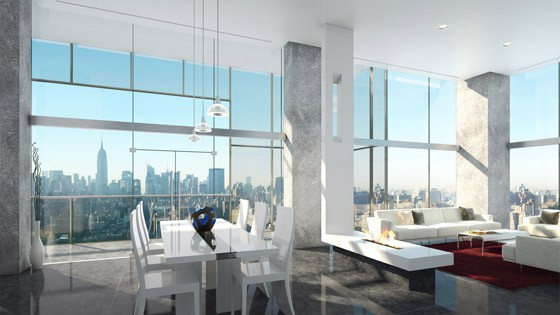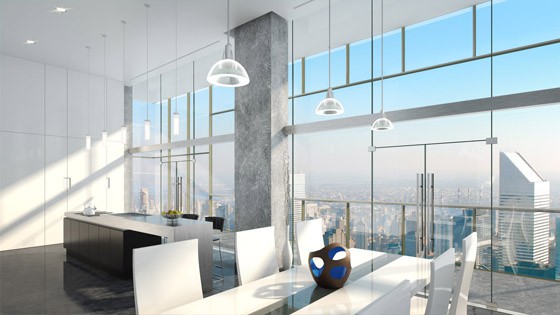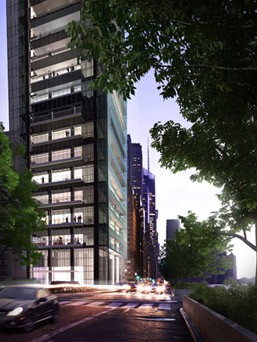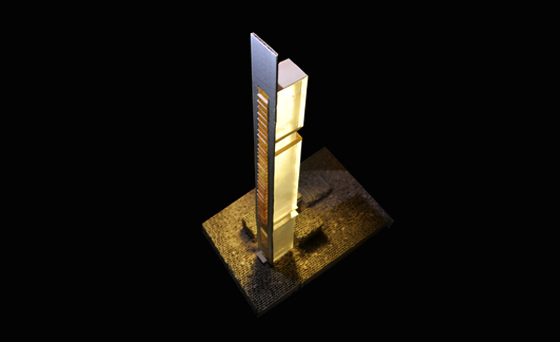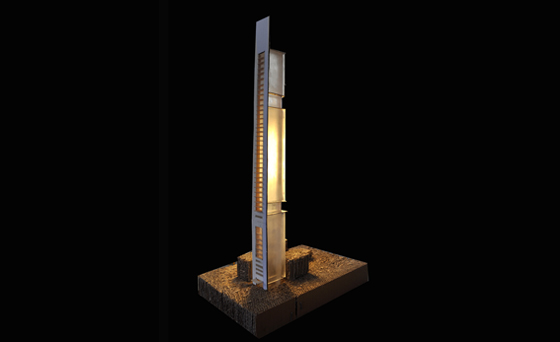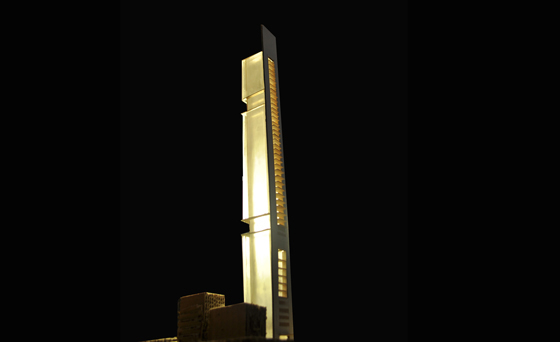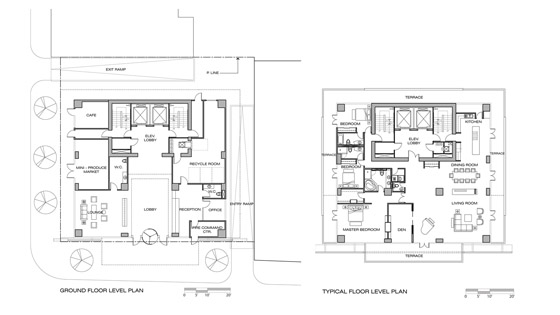Sustainable Vertical Neighborhood Proposed
This iconic, 950-foot residential tower is proposed for a micro-urban site in New York City. The tower is a vertical neighborhood creating an efficient and valuable use for a small and otherwise underutilized water’s edge site. Uniquely, the tower is designed by solus4 using their SNCI principles (Sustainable Neighborhood Collaborative Initiative). Applying these principles requires the full engagement of the design team, the building team, the financing team and the owners.
With a cross-section of G-plus-55, there are 50 full-floor, three-plus-bedroom apartments planned at approximately 3,000 square feet, each served by high-speed, destination-selective elevators. The distinctive shape of this tower comes from its innovative structure and energy-generating systems. The entire structural system, designed by LeMessurier Consultants, is in situ concrete with flat slabs supported by columns and shear walls embedded in the extruded core shaft leaving large portions of the perimeter free for the 14-foot floor-to-ceiling glass. The exterior glazing makes up one of the tallest proposed hybrid double-glazed skins. While the initial intent of the double skin is to enhance the thermal barrier, thereby controlling heat gain in the summer and heat loss in the winter, an interesting added benefit will be the chimney effect at the external surface. Strategically placed mini-turbines take advantage of the vertical air movement to generate supplementary power. Balconies at each floor provide exterior space for residents while adding a variable shading screen to further control glare and heat gain. Temperature-controlled window shading with personal preference overrides will provide for individual comfort requirements in any season.
The 950-foot blade mast is cantilevered off the concrete frame. Its entire outside surface, along with certain portions of the exterior glazing, is covered with transparent thin-film photovoltaic panels projected to provide the majority of the power requirement for the building, in tandem with other passive and active sustainable systems. Initial calculations show the building generating excess power at certain times of the year, which suggests a possible source of income for the residence owners. Keeping to the SNCI principles for energy savings strategies, the building will have no parking, except for a some all-electric cars in a variety of models (sedans, SUVs, mini-cars, etc.) that will be garaged on-site and owned and operated by the common ownership of the residences using a card access system.
The balconies, in addition to providing living space and shading, will act as rainwater collectors. The rainwater, rather than being shed to the street, will be harvested and added to the gray water recycling system. Along with fully integrated energy management systems, each apartment will have its own mini-plant for comfort control, domestic water, and recycling, thereby ensuring a stand-alone capability and reduced reliance on central systems.
In addition to the entrance/exit to the all-electric car garage, the street level base of the tower will include a multi-level common social space, including neighborhood retail and food outlets, mini-produce market, terraced cafes, recreation, gym, swimming, museum/gallery space and office/studio space for residents.
Not only will this building provide residents with outstanding views in an outstanding location convenient to all parts of the City, but will also place the owners of the residence in the forefront of low impact and sustainable communities.
